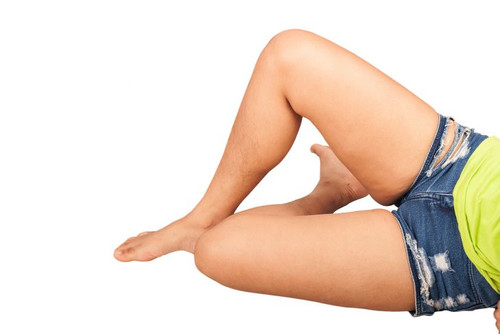How to Treat Chafing Legs
Posted by Jack Miller on 20th Nov 2022
Do you ever have to deal with chafing legs? If you have, you'll know how painful and debilitating they can be. Luckily there is plenty you can do to aid faster healing, as well as to prevent further chafing in the future. Take a look at our top tips to deal with a case of chafe and some proven strategies to avoid the problem reoccurring.
The best treatment options for chafing
Ensure the chafed surfaces don't continue to rub
Friction between two areas of skin is what causes them to break down, causing chafing. At its most basic, chafing is a mild friction burn, caused by repeated rubbing. The tops of the inner thighs are particularly prone to chafing, especially in people who walk or move extensively as part of their job, or who play sports.
Ensuring the two surfaces don't continue to rub against each other is critical to the healing process. If possible, refrain from any movement that causes the thighs to rub together. In addition, avoid clothing or constricting dressings that rub against the damaged skin. In an ideal world, chafed skin should be left clean and exposed to the air, to heal naturally. Where this isn't possible (and we understand not everybody can spend a few days off work to allow healing), use a suitable barrier to minimise skin-to-skin contact.
Practice good hygiene
Chafed skin doesn't have a top epidermal layer, which means it's easy for bacteria to enter. Unfortunately, the areas at the top of the thighs (and behind the knees, where chafing may also occur) are particularly prone to trapping perspiration, which, when stale, can harbour bacteria. Gently washing the affected area with tepid water and gently patting it dry with a clean towel twice a day will help minimise the risk of infection.
Make dryness a priority
If affected by chafing, try to wear absorbent clothing that wicks moisture away from the body. Make sure to dry thoroughly after bathing or showering and, if you can avoid activities where you're likely to end up getting excessively sweaty.
Seek medical attention if necessary
Chafing that doesn't respond to these measures may need to be treated with a steroid cream or medicated antibiotic ointment. If you see no improvement in a few days or notice oozing, discharge or increased soreness, contact your medical provider.
Preventing chafing in the future
Wear the correct clothing
Make sure clothing is absorbent (natural fibres are ideal) and fits correctly, you may choose to wear chafing shorts.
Practice good hygiene
If you don't already, regular bathing or showering is vital, along with making sure the inner thighs, behind the knees and other vulnerable areas, are thoroughly dried.
Invest in a barrier, such as anti-chafing shorts or a thigh guard
Particularly if your occupation or sporting interest put you at risk of chafing, we recommend some form of chafing guard. Creams and jellies can work but are messy and require frequent reapplication. The better solution is anti chafing shorts or anti-chafing thigh bands are specialised articles of clothing that provide an effective, permanent answer to troublesome chafing.
Contact the team at No More Chafe to find out more about your anti-chafing options.

